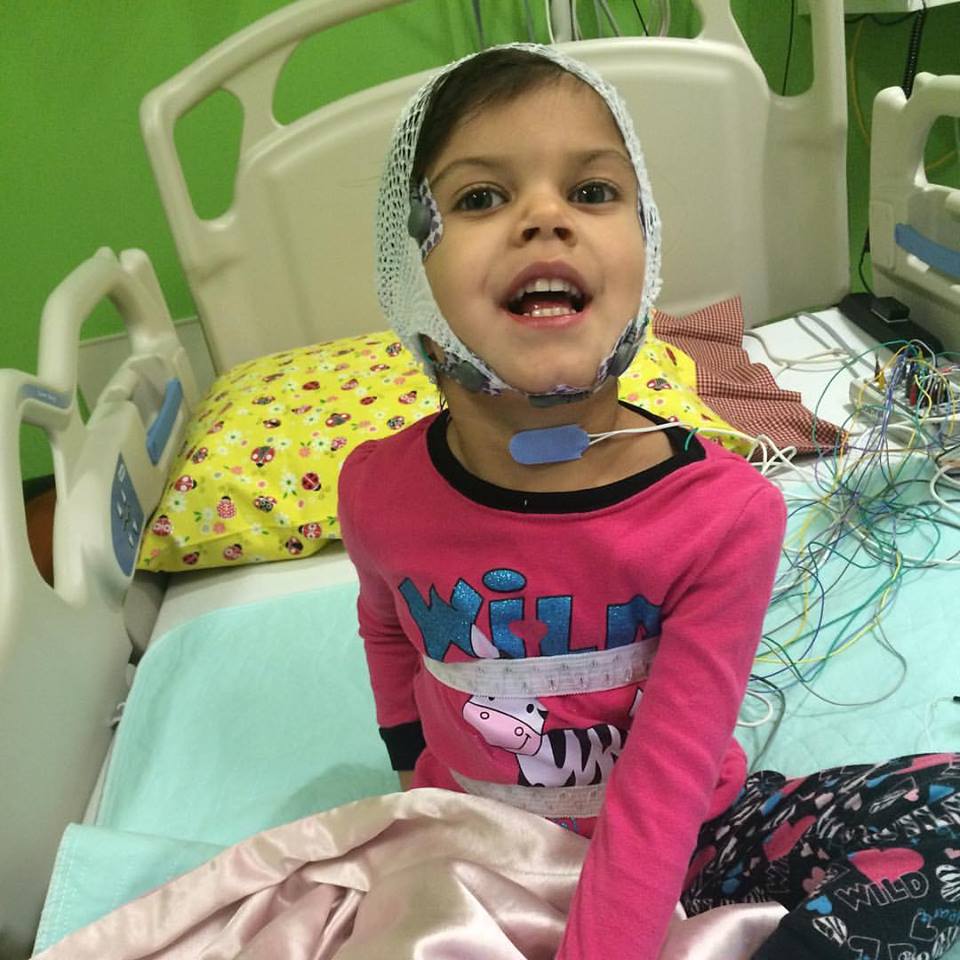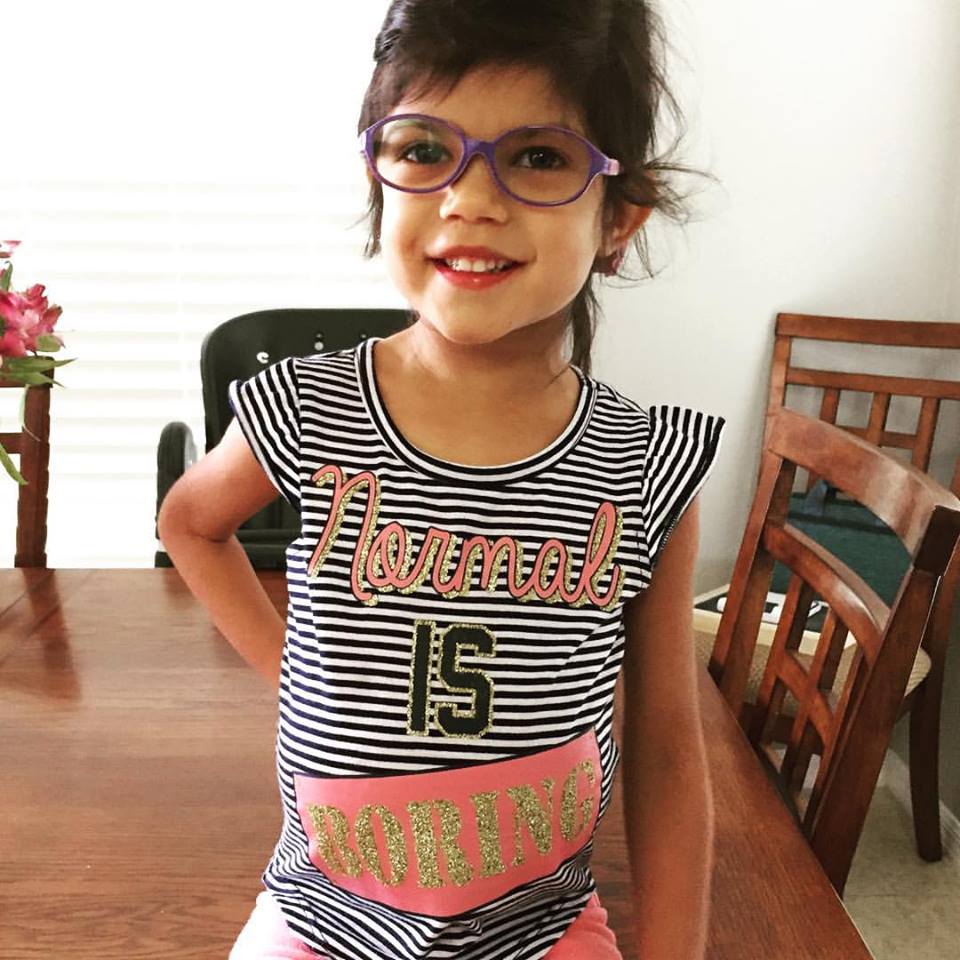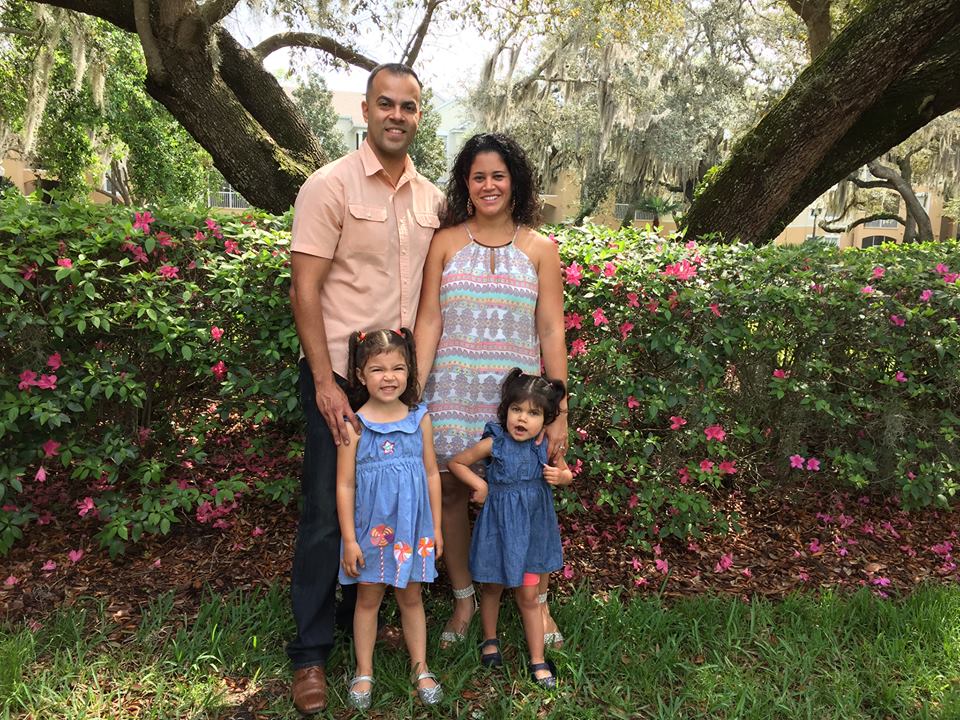Victor and Jeannette Vega of Madison, Ala. knew their daughter Tiana was falling behind in her development but had no idea that she would be diagnosed with a condition so rare, it occurs in about 1 in 10,000, and only in girls.
“At around 9 months, family and friends started telling me that there was some kind of a delay, so I just kind of kept an eye on it and figured okay, she’s delayed, but she’ll catch up,” said Jeannette.
This was only the beginning of a two-year journey to a diagnosis for Tiana.
Early signs
When Tiana was about 14 months old, Victor and Jeannette realized Tiana was not catching up, and was missing developmental milestones like getting into a sitting position on her own or beginning to talk. 
“She pretty much didn’t have any words. If she did, it would last about a day or so, and then just disappear,” Jeannette explained, “so we got her involved with Early Intervention.” Alabama’s Early Intervention System provides support and services for infants and toddlers with developmental delays or disabilities.
Tiana began speech therapy, physical therapy and occupational therapy on a weekly basis…and then the seizures started.
“She had one that really scared me. Her arms were really shaking, her eyes were twitching and she was screaming,” Jeannette explained.
Soon after, Tiana’s pediatrician recommended they make an appointment with Martina Bebin, MD.
Still undiagnosed
Dr. Bebin is a pediatric neurologist with a special interest in genetic conditions that cause intellectual disability and/or epilepsy and professor of neurology and pediatrics at the University of Alabama at Birmingham (UAB) and Children’s of Alabama. She sees patients at North Alabama Children’s Specialists in Huntsville.
“Tiana was almost two-years-old when she first came to see us in the neurology clinic and the primary reason was concerns regarding her developmental delays,” Dr. Bebin explained.
It was evident that Tiana had unexplained developmental delays, so Dr. Bebin knew that she, and her parents, would be perfect candidates for the CSER (Clinical Sequencing Exploratory Research) project at HudsonAlpha Institute for Biotechnology.
CSER is a project funded by the National Institutes of Health that provides the means for DNA sequencing to identify the genetic causes of undiagnosed conditions.
“Our major goal is to use whole genome sequencing to identify the causes of the symptoms that are found in children with otherwise unexplained intellectual and developmental disabilities,” said Greg Cooper, PhD, faculty investigator at HudsonAlpha who is leading the CSER project.
This was the case for Tiana. The usual diagnostic evaluation – including brain imaging, genetic testing, chromosome analysis and microarray – did not provide an answer. But maybe whole genome sequencing would.
The Vegas were accepted and enrolled in CSER, had their blood drawn and then submitted to HudsonAlpha for sequencing and analysis.
The only thing left to do was wait.
Six months later, a diagnosis
“It took about six months to get results back,” said Victor. “At the time, we were also in the process of moving from Huntsville to Orlando so we were kind of starting to get worried.”
On Dec. 4, 2015, with the moving truck loaded and just two days away from moving to Orlando, Victor and Jeannette finally got the answer they had been looking for more than two years.
 Tiana was diagnosed with Rett syndrome, a neurodegenerative disorder that is almost exclusively seen in girls.
Tiana was diagnosed with Rett syndrome, a neurodegenerative disorder that is almost exclusively seen in girls.
Feelings of confusion, relief, sadness and numbness filled the room.
“When we got the diagnosis and it was Rett syndrome, I was still confused because I had never even heard of it before,” said Victor. “Jeannette immediately started crying and my first thought was: this must be serious. I just sat there in shock.”
Normally, children with Rett syndrome present symptoms around six to 18 months, because they have regression in their development, meaning they start to slip in the advancement of their developmental milestones.
“In Tiana’s situation, she was almost two years old when she first came to see us in the neurology clinic,” said Dr. Bebin. “She didn’t have any of the typical mannerisms that you classically see with Rett Syndrome patients, like the hand-wringing, washing or clapping motions, so there was not a specific neurological disorder that you could identify when you first saw her.”
Rett syndrome is considered rare (affects about 1 in 10,000 females worldwide), but it is not an uncommon condition among CSER participants.
“Rett syndrome occurs rather frequently in the population we see. In fact, we’ve identified several patients affected with Rett syndrome through the CSER project,” said Cooper. “But it’s still relatively rare within the general population.”
Looking forward
It has been more than two years since Tiana was diagnosed with Rett syndrome and although it is still difficult to cope with the diagnosis, Jeannette says Tiana’s spirit gets them through each day.

From left to right: Victor Vega, Jeannette Vega, Aliyah Vega and Tiana Vega
“It’s rough thinking that she’s not going to be able to do things that her sister can do or that her peers can do. It’s hard to cope with that,” said Jeannette. “But Tiana is all smiles, all laughs. She’s just a happy girl and I don’t know what I would do if she was not like that. She’s super strong.”
The Vegas have connected with other Rett syndrome families and support groups and made the decision to move back to Madison, Ala. this summer.
“After meeting with her speech and language pathologist Traci Ingram, getting a tour of Madison city schools, and being able to sign Tiana up with her previous physical therapist, Andrea Batt, we were sold on coming back!” said Jeannette.
In addition, they are only 90 miles away from one of the world’s top Rett syndrome experts: Alan Percy, MD, a pediatric neurologist at the UAB Rett Syndrome Clinic.
“That’s a tremendous advantage to families to have a resource like the Rett clinic at UAB,” said Dr. Bebin. “We were able to give them an answer, but also the opportunity to be connected to any possible clinical research activities, now that Tiana has a genetic diagnosis.”
The Vegas hope sharing their story lets other families know that they are not alone.
“We are here,” said Jeannette. “For families that are recently diagnosed, or looking to connect with other families, we’re here and our doors are open. We just want to be able to support them, given the amount of support that we have been given.”
“HudsonAlpha was familiar to us, but I never actually thought that it would be a part of something personal to our family,” said Victor. “It’s going to be a hard road, but we are thankful for the support and resources available right here in Huntsville, like HudsonAlpha.”
In just four years, more than 500 families have been enrolled in the CSER project and 150 now have a more precise, clinical diagnosis, which Cooper says would not be possible without HudsonAlpha’s collaboration with UAB, Children’s of Alabama and North Alabama Children’s Specialists.
“Together, we are able to diagnose known conditions that are otherwise difficult or impossible to diagnose without DNA sequencing,” Cooper explained, “and leverage the data we generate to make new discoveries, which in turn eventually lead to new diagnoses.”
The CSER project is funded through NIH grant UM1HG007301.
If you, or someone you know is interested in participating in the CSER project, contact North Alabama Children’s Specialists at 256-533-0833 ext. 216.
The Vegas tell the full story of finding a diagnosis for Tiana in the following video featuring Greg Cooper and Martina Bebin.


